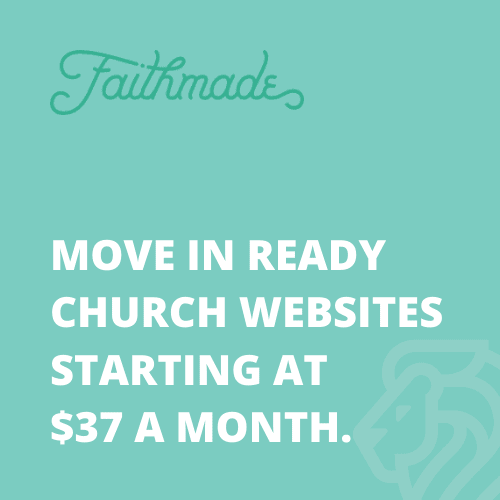The other day, I was catching up with an old friend and mentor who pastors a quickly growing church. Recognizing this growth, he has been challenged by some to offer an additional service based on the “80% rule”. Consultants and church leaders reference this rule quite a bit, suggesting that when a church auditorium nears 80% capacity, additional growth will be limited and additional service times (or a larger auditorium) should be developed. And while there is some well-argued reasoning behind the rule, there are a few reasons why I refuse to buy into it completely.
.
1. The 80% rule does not exist in many industries.
People love going to a sold out performance. Five-star restaurants always have a wait time. When the quality of a product is high enough, people do not mind sharing it with many other people. In fact, they consider the size of the crowd an evidence of the quality of the experience they are about to share. If members are quick to move churches because they have to look for a seat at yours, your environment may not be as engaging as it could be.
.
2. Crowd density creates energy.
When you go to a concert or sporting event, you hope it”s a packed house. There is a level of energy that exists when many people from various backgrounds come together for a shared purpose. And so as your church attendance becomes larger, felt energy becomes greater. To increase service offerings because more people are present is to dissolve the energy that your growth is creating. I can only imagine the emptiness people feel going from an auditorium at 80% capacity to one at 40% capacity in a week”s time. [Cue hollow echoes and tumbleweed.] The only time greater attendance does not create energy is when there is an absence of shared purpose. If people are becoming frustrated instead of energized by a larger crowd, there may be a lack of clear vision for everyone to be excited about.
.
3. An open seat is the worst way to show someone they are welcome.
Proponents of the 80% rule argue that visitors are less likely to return to a church if they do not feel like there is a place for them. The problem with this is the underlying assumption that the message of “open community” should be communicated by an open seat. There are books upon books that provide great methods for making guests welcome. Develop your own way of sharing that message. But don”t leave it up to a chair to do the talking.
.
There is certainly a point at which every growing church must consider additional services or alternative venues. But that point should not be defined so simply as “80% capacity”. If you create an engaging environment, unite everyone around a shared vision, and develop your own ways of making guests welcome, people will be thrilled to share the experience with as many people as they possibly can.





2 Comments
One time when I played in the band for Cru we were basically assigned three classrooms to hold our weekly meeting that usually had about 100-120 people attend. So it was going to be really crowded and people started moving the chairs in, I stopped and said that not everyone will get a seat so why not just forget the chairs and have people stand for the songs/sit on the floor like they were at a concert. It made it really nice for me because people were so close up to me/the band while playing that the performance aspect of the praise songs went away and people just all blended with those “performing”. Crowds do provide energy.
That’s awesome! I forgot you used to play for Cru. There really is something to be said about creating environments where the line between stage and audience is blurred. I think it creates a subtle sense of community throughout the space.